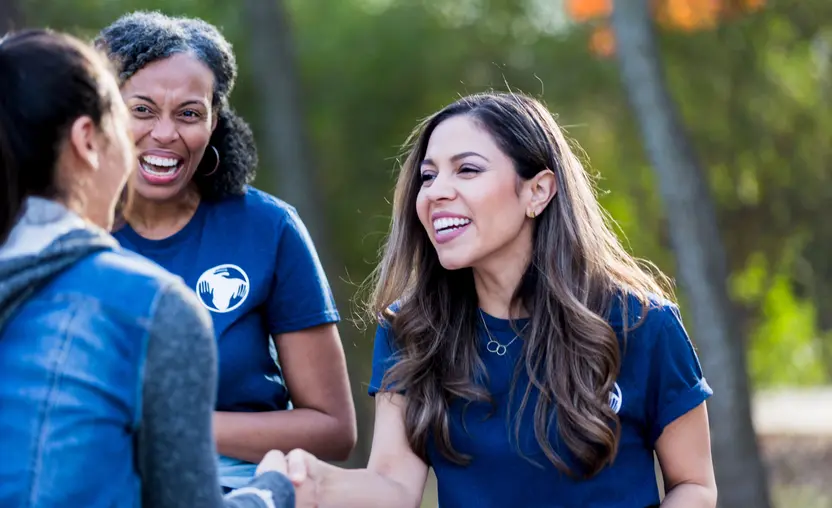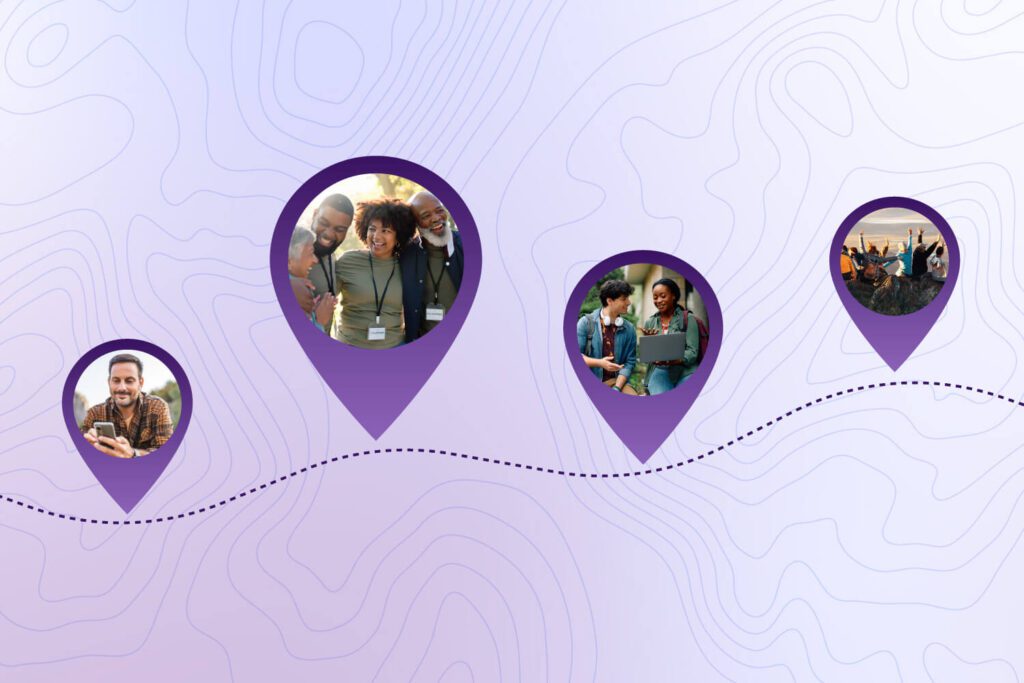8 donor acquisition best practices for nonprofits

Donor acquisition is the multi-stage process of finding and converting prospective donors to support a given cause. Although donor retention is much easier and more cost-effective than finding brand-new donors to welcome into the fold, donor acquisition is still important, especially for newly-formed nonprofit organizations that don’t have donors to retain yet.
If your nonprofit wants to build strong relationships with potential and existing donors, acquisition tactics must be factored into your nonprofit’s overall strategy. Follow these best practices to get started.
1. Encourage current supporters to take part in donor acquisition
Leveraging the connections that your closest supporters have with their family members, friends, and colleagues can help you acquire new donors with powerful donor management software. A board member’s nephew might be passionate about your cause or the employer of a volunteer might be looking for a nonprofit to support as part of their CSR program.
Consider the people that are the most dedicated to your purpose, such as:
- Board members
- Major and recurring donors
- Staff members
- Volunteers
Ask these dedicated supporters to network on your behalf. Then, thank them for any new donors that they might bring to your organization. Send handwritten cards to show your gratitude and acknowledge their commitment to your cause.
2. Conduct a feasibility study
In a feasibility study, a third-party representative, such as a fundraising consultant, interviews key organizational and community leaders to determine their perceptions of your nonprofit and its initiatives. This helps to map out your current donor population, identify individuals who are likely to support future fundraising campaigns and determine whether your current donor acquisition efforts are successful.
In addition, feasibility studies can:
- Generate interest in your campaigns. Since you’ll be conducting interviews with stakeholders, such as major donors and loyal supporters, the feasibility study is an excellent opportunity to promote your event, excite your donors, and gauge their interest.
- Develop deeper donor relationships. By listening to their feedback through a feasibility study, donors will see that you care about their opinions and are putting in the effort to make positive changes. Plus, it gives donors a chance to support your cause without having to pull out their wallets.
- Identify gaps in your nonprofit’s infrastructure. When conducting a feasibility study, you have to be open to constructive criticism. Even negative feedback can be beneficial if you put effort into correcting the issue.
- Improve your marketability. Feasibility studies also help you understand your role in the community and your reputation. When you understand how the community perceives your organization, you’ll be better equipped to craft communication strategies.
With the insights gained from a feasibility study, you’ll be better equipped to launch a successful donor acquisition strategy.
3. Leverage multichannel communications
Combining both traditional and digital communication channels provides multiple touchpoints for interaction and increases your chances of reaching as many prospects as possible.
Adopt a multichannel communications strategy through:
- Word-of-mouth
- Cold calling
- Direct mail
- Social media
- Email campaigns
- Blogs and website articles
Be sure to maintain positive, donor-centric language across these channels to show how important their participation is. For instance, when asking a prospective donor to come to your next walkathon event, use copy like, “With each step, you can make a difference.”
4. Host donor acquisition events
Events are an effective donor acquisition strategy. That’s because when potential donors can put faces to the voices they’ve heard on the phone and the names they’ve seen at the end of emails, they are more likely to form a personal connection to your nonprofit.
Consider inviting your donor prospects to the following events:
- Guided tours of your facility
- Live and virtual auctions
- Walkathons
- Webinars
- Meet-and-greets with beneficiaries
During these events, have a designated area for attendees to submit their email and mailing addresses, so you can continue building a relationship and soliciting their support after the event ends.
5. Make the most of peak giving times
Whether it’s the tax incentive or the physiological effects, donors enjoy contributing to worthy projects. And while many donors give at different times of the year, there are specific times throughout the year when individuals are more likely to be in the giving spirit.
As the year draws to a close, most people have a firmer grasp of their financial situations and know how much money they can reasonably set aside to donate to charity. As a result, the Tuesday after Thanksgiving, commonly known as Giving Tuesday, can be a great opportunity to broadcast your organization’s purpose to potential donors who enjoy taking part in the dedicated day of giving.
6. Leverage corporate partnerships
Most corporations seek to develop their culture of social responsibility and philanthropy through nonprofit partnerships. Whether you co-host an event with a local business or receive a corporate foundation grant, you should work diligently to identify potential donors within your company. To do so, promote volunteer opportunities, encourage donations, and invite employees to upcoming events.
7. Show donor prospects how their gifts will be used
Donors want to know that their hard-earned money is going towards something
significant. Convince them that giving to your organization is a worthwhile act by explicitly stating what a donation will be put toward. This helps donors visualize the change they’re making.
If your organization’s latest project is to build a shelter for pets abandoned during a hurricane, your donation form might say:
- A $15 donation purchases bowls and food containers.
- A $30 donation buys nails and hammers.
- A $50 donation purchases kennels and beds.
To stress the importance of even small donations, your organization can share pictures of the change you’ve made and the work you’ve done to prove to donors that they make an impact.
8. Target high-quality donors
As you already know, recurring donations are the best contributions your organization could ask for, as those who make larger contributions are more valuable than those who make smaller donations. While all prospects are important to your organization’s purpose, you devote extra time and effort into focusing on high-quality prospects.
Conduct a wealth screening to determine which of your potential prospects have the capacity to become a major or recurring donor. Be on the lookout for those who have significant giving histories at other organizations or have substantial incomes.
Once you know who these donors are, an easy way to acquire their support is by adding recurring giving options to your donation forms. This lets donors know you’re interested in their continued support.
The bottom line: Turn donor acquisition into donor stewardship
As you acquire new donors, consider how you can keep them around for the long haul. Employ stewardship techniques, such as sending personalized communications, throwing donor appreciation events, and soliciting donor feedback through surveys, to inspire meaningful support for years to come.
Ready to Get Started?
Work with Bonterra



